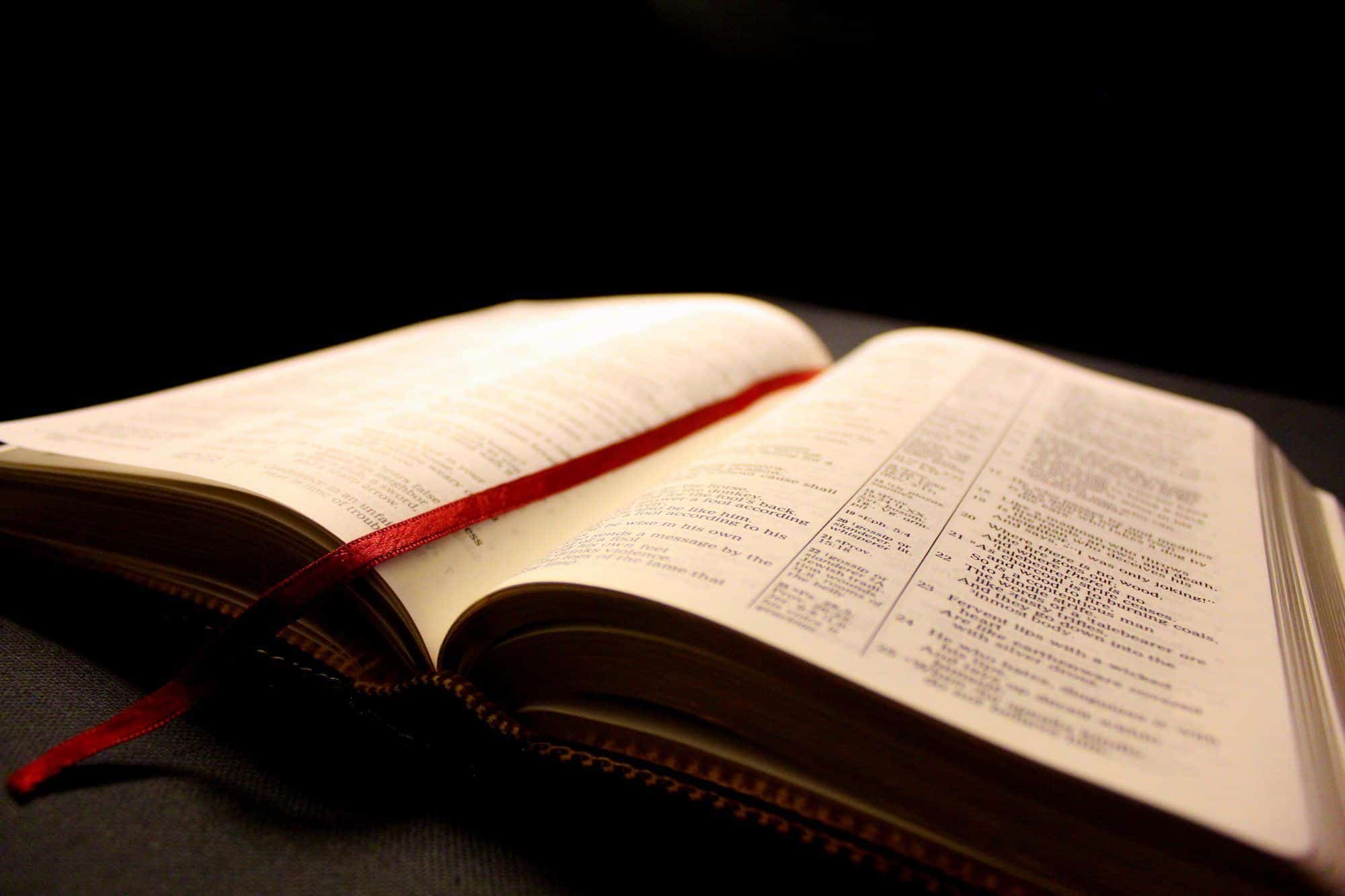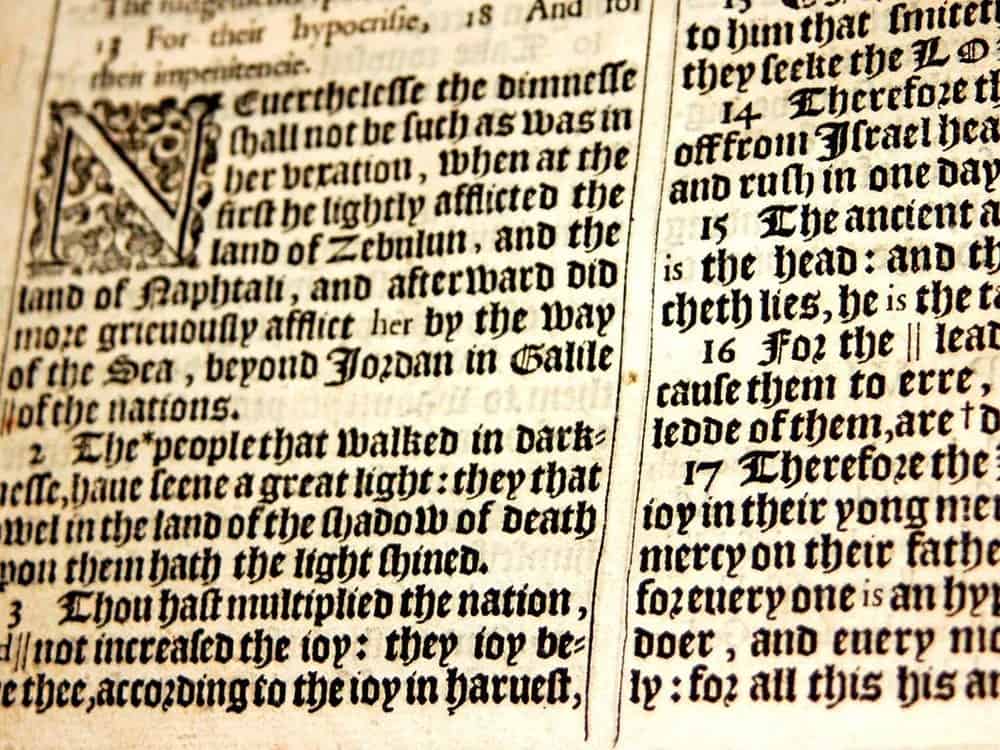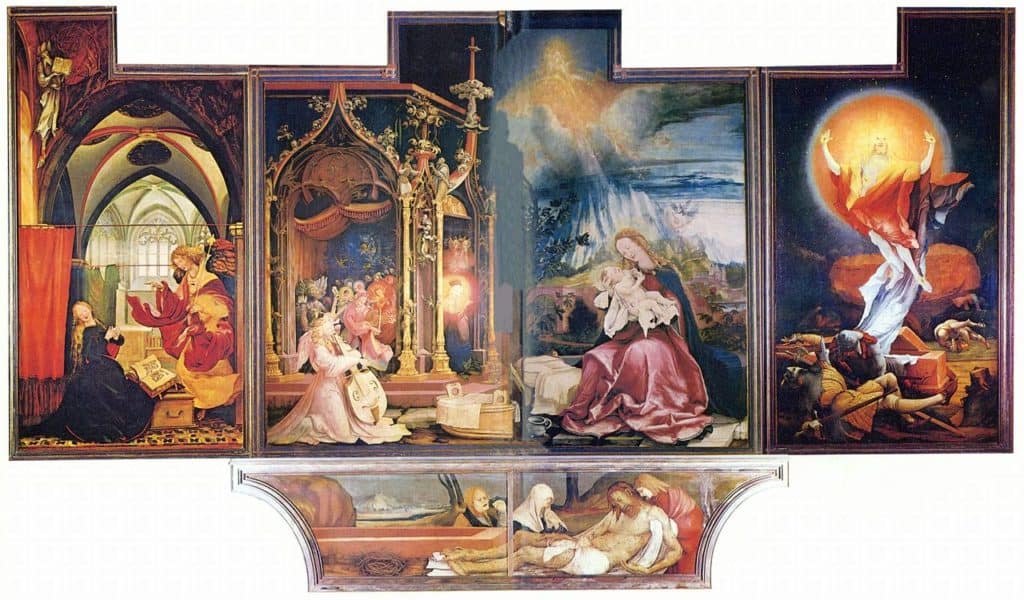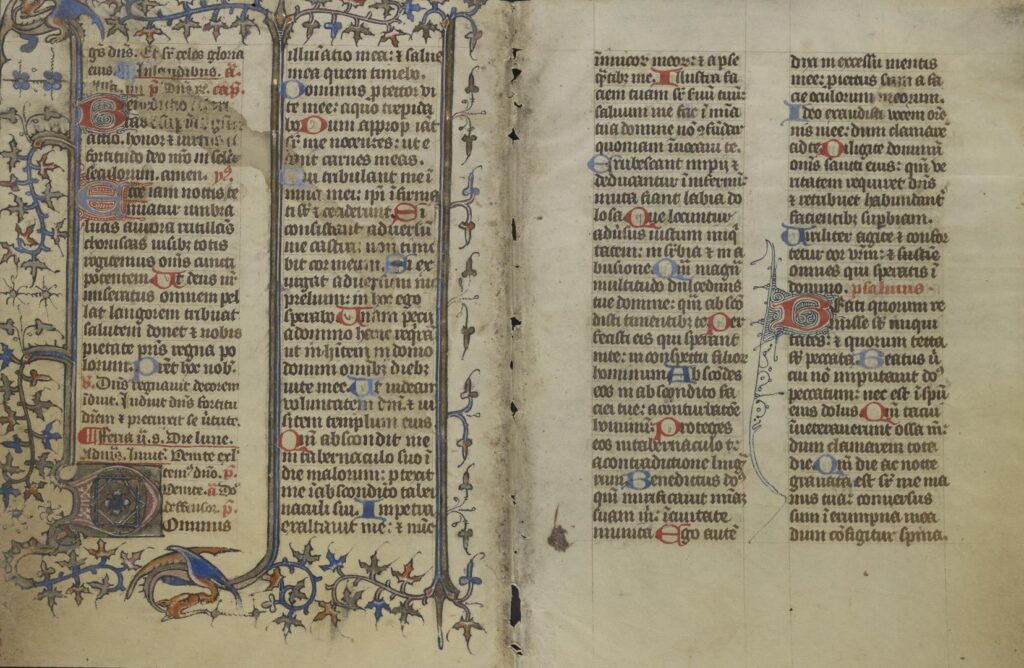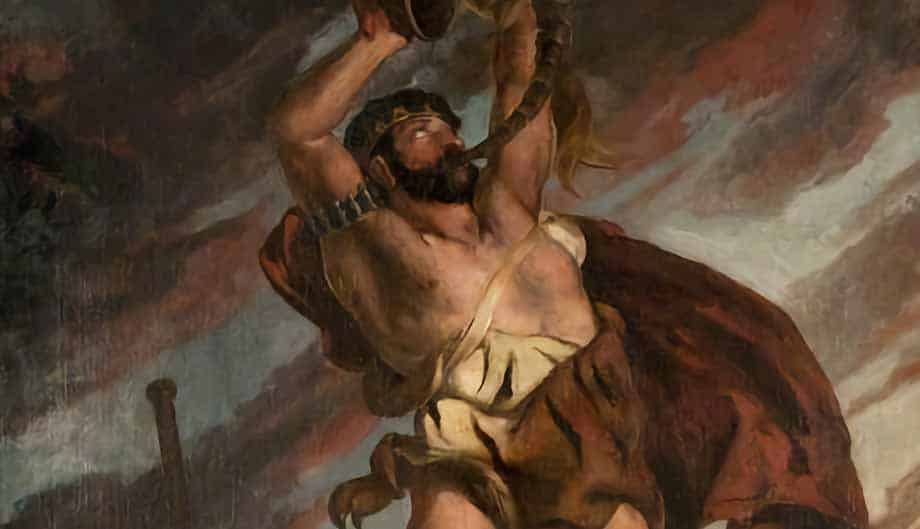The Bible is an anthology of sacred texts for Christians. The complete Christian Bible exists in 728 languages. In addition, the New Testament has another 1,617 languages translated. Smaller portions have been translated into 1,248 languages.
The word Bible is derived from the Greek word for book, biblion. The Old Testament consists of the Hebrew Scriptures (called the Tanakh in Judaism) which includes books of Jewish law, history, prophetic writings, and wisdom literature. The Christian Bible includes texts composed in three languages (Hebrew, Aramaic, and Greek).
The first full copy, called the Codex Vaticanus, was written in 312 CE. It included both Old and New Testaments. This appeared in what was Koine Greek. In 405 CE, Jerome translated the Codex Vaticanus into Latin, the official language of the Catholic Church. He called it the Latin Vulgate. During the 400s CE, the Church adopted the “hidden” books, called the Apocrypha, into the biblical canon. The Roman Catholic Church and the Eastern Orthodox Church include the seven Apocryphal books in Bibles. These were not translated to Hebrew.
The Biblical Canon
The canons of the Bible relied on oral transmission of texts. These records did not rely as much on literacy and written documents. Professional scribes copied and preserved sacred texts. They exist in the form of scrolls that survived over many centuries. The Christian canon was complete by the fifth century CE.
The Roman Catholic and Eastern Orthodox Christians include additional text. They call these the Apocrypha, or the deuterocanonical books. Martin Luther began publishing Protestant Bibles with the Apocrypha separated into a different section in 1534. (see Geneva Bible, 1606 image) In the early 1800s, Protestant Bible publishers took the Apocrypha out, entirely.
Canonization of the Old Testament
Many of the texts that comprise the Hebrew Scriptures, the Old Testament, originally existed as oral tradition. Over the centuries, people wrote down, collected, and wove these oral traditions. With time, community and religious leaders edited, revised, and validated these texts as authoritative. Scribes carefully stored and copied the scrolls containing the Scriptures. In later centuries, scribes copied these scrolls into codexes, which were hand-written manuscripts with spines, representing the earliest books. Archaeologists discovered fragments of Scripture engraved in clay, stone, and leather around the Ancient Near East.
The documents contained in the Hebrew Scriptures were only accessible to priests and royalty. To common men and women, the truths were only available through the continued passing down of oral traditions. During Alexander the Great’s Hellenization of the modern world, the Hebrew Scriptures were translated into Greek. This new Greek translation of the Hebrew Bible became known as the Septuagint. The Targum was written in the Aramaic language. The Aramaic translation was the common language during Jesus’ lifetime.
Canonization of the New Testament
During the early history of the church, the apostle (leadership) shared copies of letters among the churches. Some of these letters became part of the books known as Scripture. These texts guide faithful believers in Christian behavior.
During this time, teachers of other doctrines emerged. They began spreading letters with teachings that contradicted the teachings of the apostles and other Christian leaders. To combat these other teachings, councils of church leaders met. They consulted the various lists of texts in use by the churches to determine which texts reflected the teaching and authority of the apostles. The Christian church would collect and distribute these validated and approved texts as the official Scriptures.
The Muratorian Canon included all the New Testament books except Hebrews, James, 1 and 2 Peter, and 3 John. This canon developed at around 200 CE. The Council of Laodicea, (363 CE), approved the 37 books of the Old Testament, one book from the Apocrypha, and the books of the New Testament. These were approved for public reading in the churches. The council of Nicaea was documented by Eusebius, Athanius, and Eustathius. Revelations were not approved. The Council of Hippo, 393 CE, and the Council of Carthage, 397 CE, affirmed the 27 books of the New Testament.
Source Text
The KJV Bible was first printed in 1611. It is the most common bible for Christians today. Since the 17th century, early Christians preserved these texts for their quality.
These translations all utilize the original languages (Hebrew and Greek). No language maps perfectly to another language. Many relevant discoveries of the Bible are not in every collection, such as the Jesus Sutras.
The Old Testament
The Old Testament is largely the same as used in Judaism, with variations.
The Pentateuch
The Torah (Hebrew) and the Pentateuch (Greek) contain the first five books of sacred texts. This collection begins with the book of Genesis. The first eleven chapters of Genesis include the account of creation, Adam and Eve, Cain and Abel, Noah and the Ark, and the Tower of Babel. The second part of Genesis focuses on the family of Abraham. It follows his descendants (Isaac, Jacob, and Joseph) as they form a nation of God’s chosen people.
The second book, Exodus, chronicles how God rescued the descendants of Jacob (the Twelve Tribes of Israel) from slavery in Egypt. It tells how Moses became their leader, how God sent ten plagues on the Egyptians until Pharaoh let God’s people go, and how Moses received the Ten Commandments. The third book, Leviticus, records instructions God gives to Moses about his Law. The books of Numbers and Deuteronomy narrate the same events or the early history of Israel.
The next section of the Old Testament contains the history books, Joshua, Judges, Ruth, 1 & 2 Samuel, 1 & 2 Kings, 1 & 2 Chronicles, Ezra, Nehemiah, and Esther. These books follow the Hebrew people on their quest for the Promised Land. New forms of religious authority developed from priests to judges, to the monarchy. The next section contains the wisdom books. Job is a drama about suffering. Psalms are sacred chanting or song. Proverbs are a collection of wise sayings, and Ecclesiastes is the collected wisdom of an ancient Teacher.
The last part of the Old Testament is the writings of prophets. Traditionally, scholars divide these into the Major Prophets (Isaiah, Jeremiah, Lamentations, Ezekiel, Daniel) and the Minor Prophets (Hosea, Joel, Amos, Obadiah, Jonah, Micah, Nahum, Habakkuk, Zephaniah, Haggai, Zechariah, and Malachi).
The New Testament
Four centuries pass between the last book of the Old Testament and the New Testament. The Old Testament focused on recording the history of God’s chosen people, the Jews. The New Testament is concerned with one Jewish man—Jesus Christ, and the history of the Christian church.
The four Gospels (Matthew, Mark, Luke, and John) record Jesus’ life, death, and resurrection. The Synoptic gospels are the first three. The book of Acts records the event of Pentecost (the coming of the Holy Spirit), the emergence of the Christian church, and one of the church’s most influential teachers, Paul.
The Letters
The New Testament letters instruct the new churches on how to live righteously, and function as a community. Jewish followers of Christ debated the best way to incorporate Gentile (non-Jewish background) believers into the new community. It is “the word of God”. As such it communicates God’s character, requirements, plans, and purposes.
What do you think? Please share your thoughts below.
Too often, people answer faith questions with dogmatic certitude and neglect the historic diversity and complexity of Christian ideas. The Questions Project is a resource that responds to questions about faith, history, and scripture in a way that honors the historic diversity and complexity of Christian thought. But, this is a work in process and we need your help. Please provide feedback. We are particularly interested in knowing what we have missed and how we can improve our responses. Please keep all comments kind or risk deletion.

